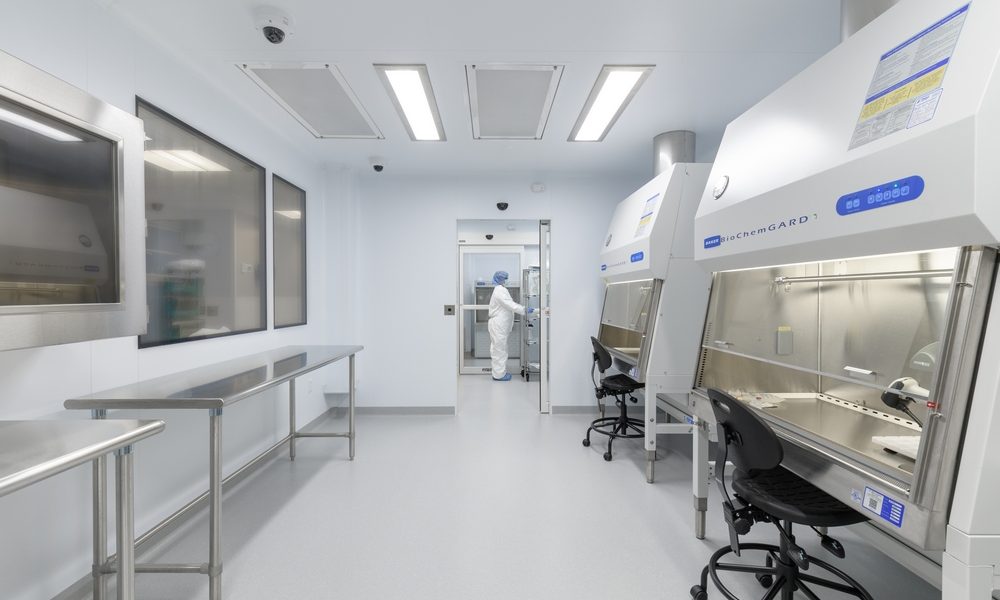 Completed pharmacy at Lawrence and Memorial Hospital Cancer Center in Waterford, Connecticut.
Completed pharmacy at Lawrence and Memorial Hospital Cancer Center in Waterford, Connecticut. 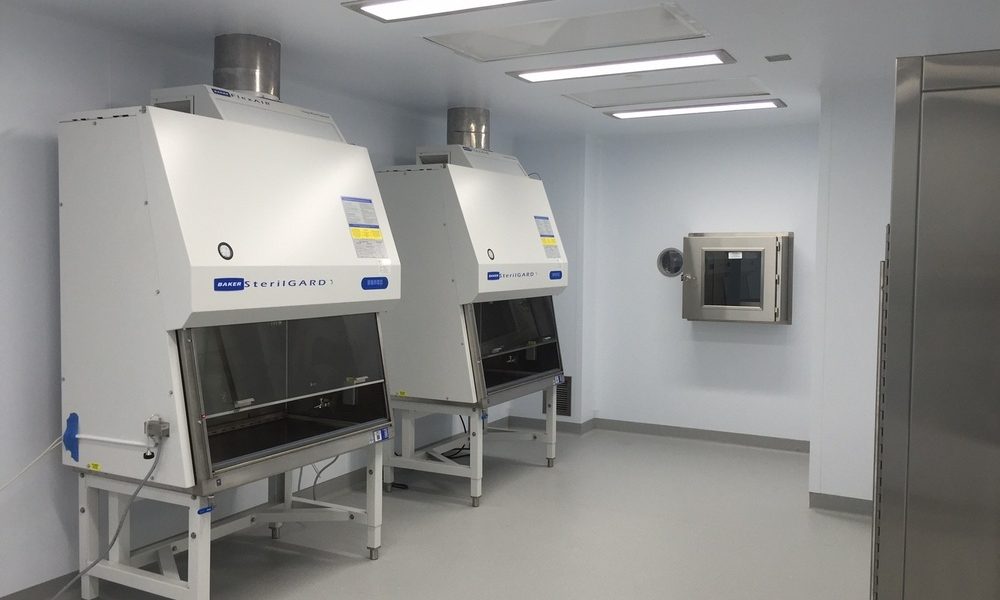 New pharmacy for the Cancer Center at St. Francis Hospital and Medical Center in Hartford, Connecticut was built in existing space within the hospital.
New pharmacy for the Cancer Center at St. Francis Hospital and Medical Center in Hartford, Connecticut was built in existing space within the hospital. 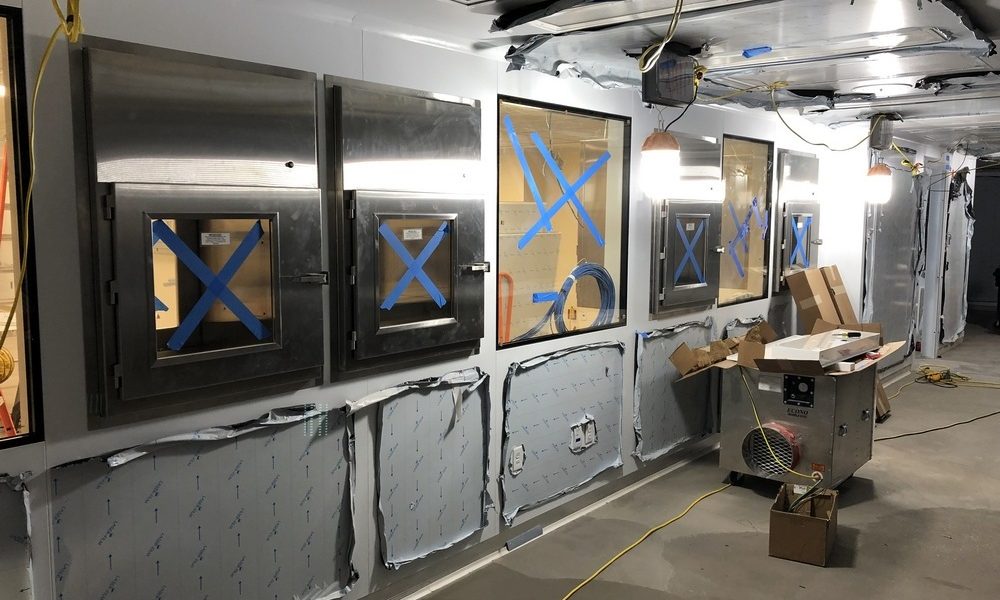 The new compliant pharmacy at Dana-Farber Cancer Institute in Boston, Massachusetts is under construction now while staff are located in a temporary compounding pharmacy in an adjacent building.
The new compliant pharmacy at Dana-Farber Cancer Institute in Boston, Massachusetts is under construction now while staff are located in a temporary compounding pharmacy in an adjacent building. 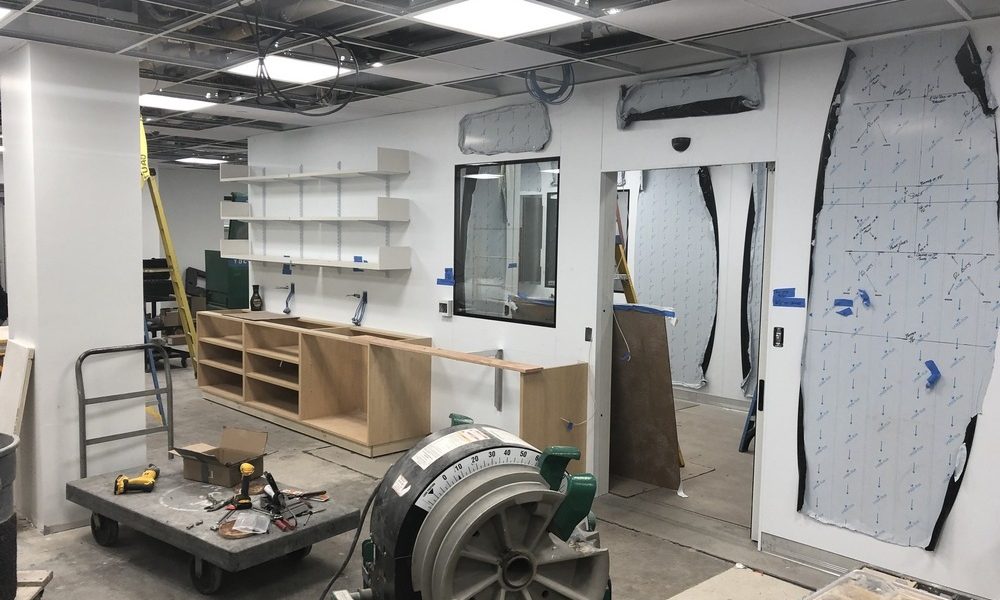 The compliant pharmacy at Lawrence General Hospital in Lawrence, Massachusetts is being built in a space that a previous department relocated from allowing it to be built new in a single phase.
The compliant pharmacy at Lawrence General Hospital in Lawrence, Massachusetts is being built in a space that a previous department relocated from allowing it to be built new in a single phase. Subscribe Now
Are You Ready for USP 797/800?
By Greg Heppner
The Dec. 1 deadline for compliance with the United States Pharmacopia’s updated USP 797 and new USP 800 regulations is looming.
Almost every healthcare pharmacy nationwide will require structural and operational changes to comply with these regulations. USP 797 provides protection for sterile compounding activities and their environments from contaminations. USP 800 protects healthcare workers, patients and environments against hazardous drug compounds. A few facilities have completed projects to meet compliance; some are in the midst of the design and construction phases, while the rest are just beginning planning for this work. With the clock ticking, what are the best ways to strategically plan to meet the new regulations of this mission-critical department?
Is your facility ready for this challenge?
Typically USP 797/800-compliant pharmacies require more space and more intensive mechanical, electrical and plumbing systems than their predecessors. Most hospitals are choosing to renovate existing facilities rather than building new, but a very common problem with renovation is finding the additional space to renovate, or a new location that meets operational requirements. Existing pharmacies are often located in the basement or lower levels of older hospital buildings, adjacent to existing program spaces that cannot be relocated, further hindering renovation efforts. These lower-level areas are also likely to have reduced floor-to-floor clearances, existing problematic utilities overhead like plumbing or steam pipes, inadequate supply HVAC systems and difficult exhaust routes to the highest roof, making them all the more challenging.
Hospitals have three general options when undertaking the USP-required upgrades. They could choose to build a permanent pharmacy in a new location while continuing to operate the existing pharmacy. Another approach is to set up a temporary pharmacy while renovating the existing one in a single phase. Or, the third and often the most challenging option, is to renovate the existing pharmacy in multiple phases, maintaining operational standards and capacity throughout each step. A hospital’s pharmacy and facilities staff and the architect must weigh the impact and viability of each three strategies to choose the one best suited for its unique operational, physical and budgetary conditions.
Building new
Operating the existing pharmacy while the new USP 797/800 space is being constructed in a single phase is the most straightforward path to compliance. However, one challenge of this option is that available space for the new pharmacy must meet a multitude of requirements. Expanding an existing pharmacy or building a new one will often require taking adjacent space from another department’s area—a politically challenging move in the healthcare world.
General hospital pharmacies have some flexibility in their location, ideally on a central circulation route accessible to both staff and the public. This prime location can be difficult to replicate as there are many competing programs for this type of square footage. When Lawrence General Hospital in Lawrence, Massachusetts sought to build new, evaluation of their facility resulted in the discovery of available space across the corridor from its existing pharmacy following the relocation of its central processing department. The new space was large enough for the expanded program and could access adjacent mechanical space and shafts to meet USP 800 mechanical system requirements.
Specialty pharmacies, like those for cancer infusion centers, must be close to the clinical department and its patients. The renovation of the compounding pharmacy for the campus cancer center at St. Francis Hospital and Medical Center in Hartford, Connecticut needed to maintain proximity to the infusion bays. Facility staff identified existing program space that could be relocated to make room for the new, expanded pharmacy program.
Using a temporary pharmacy
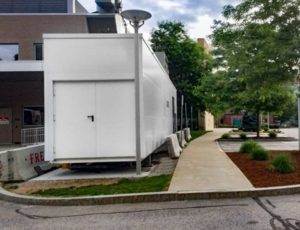
The temporary compounding trailer at Dana-Farber Cancer Institute in Milford, Massachusetts allows for existing space to be renovated in one phase.
When new space is not available and a phased-construction approach is unacceptable, a temporary pharmacy can bridge the gap toward a USP 797/800-compliant facility. One type of temporary pharmacy is a pop-up pharmacy constructed in swing space that will serve the facility for a set time and then be dismantled. Another is a mobile compounding trailer set up outside a facility for use during the construction period. While either allows for a single phase of construction for the permanent pharmacy, both involve added expense for the temporary facility.
Finding available space for the temporary setup is a common challenge for a pop-up pharmacy. It is also a challenge to locate new routes for the movement of compounding material, pharmacy staff and prepared drugs, as well as availability of MEP services. Finding temporary dedicated exhaust for hazardous drug hoods to serve the pop-up is a particular challenge. At the urban campus of Dana-Farber Cancer Institute in Boston, Massachusetts, part of a vacant laboratory floor in a connected building provided the ideal environment for a pop-up pharmacy while its main cancer care pharmacy is renovated.
Temporary compounding trailers present their own range of problems, this time outside of the facility. An urban hospital may not have free ground-level area for a trailer, while a suburban medical campus may lack a level grassy area or struggle to give up parking space or other amenities for a trailer. Constructing an acceptable travel route between the trailer and the building must address distance, weather (snow, rain, hurricanes) and security concerns. Temporary structures will need to be built to protect the trailer from vehicles, provide access for carts and personnel and supports for the trailer to sit on. Required MEP systems must be brought from the building to the trailer, either underground or overhead.
At three of its suburban locations, Dana-Farber Cancer Institute chose to employ prefabricated compounding trailers for temporary service. The trailers were custom built and located next to their cancer center buildings, with plumbing and electrical hard connections.
Phasing construction
When building new or constructing a temporary pharmacy are not feasible, a phased approach to renovating an existing pharmacy is the only option. This approach likely presents the greatest number of challenges to both the renovation team and pharmacy staff. Minimum requirements of an operating pharmacy (receiving, workroom, storage, ante room and buffer rooms) must remain in service as available spaces for renovation are isolated, worked on and put back into service. Each construction phase may require its own temporary HVAC system, new routing of staff, delivery of compounding products and access by the hospital staff and public. Regulatory requirements for the review and approval of each completed phase must be evaluated and incorporated into the project schedule.
Space restrictions at Cambridge Health Alliance in Cambridge, Massachusetts required a phased approach to its compounding pharmacy at Cambridge Hospital. Phase I preserved the existing compounding spaces while decommissioned pharmacy support spaces were renovated into new USP 797/800-compliant buffer and ante rooms. In Phase II, the compounding rooms will be renovated into new pharmacy workroom and storage spaces. Phase III will complete the upgrade by constructing new pharmacy support and office spaces from the remaining workroom and entrance vestibule.
Any renovation process to meet USP 797/800 regulations must be carefully planned to minimize impact and disruptions to the essential services these pharmacies provide. Hospitals just beginning or who have not yet considered their plan would be best served by establishing a plan-of-action to demonstrate their path to compliance immediately.
For more information about USP797/800, visit usp.org/compounding.
Author: Greg Heppner
Greg Heppner, AIA, NCARB, is a healthcare architect and principal at SmithGroup.
Tags: compliant pharmacies, Facilities Management, USP797/800
Posted May 15, 2019
More Articles:
- Coverings 2024
Apr 22, 2024 – Apr 25, 2024 - Hospital, Outpatient Facilities & Medical Office Buildings Summit
Apr 25, 2024 – Apr 25, 2024 - CxA Workshop & Exam
Apr 29, 2024 – Apr 30, 2024 - EMP Seminar & Exam at CxEnergy 2024
Apr 29, 2024 – Apr 30, 2024 - CxEnergy
Apr 29, 2024 – May 2, 2024 - PHCC West 2024
Apr 29, 2024 – May 2, 2024 - Lean in Design Forum 2024
May 1, 2024 – May 2, 2024










